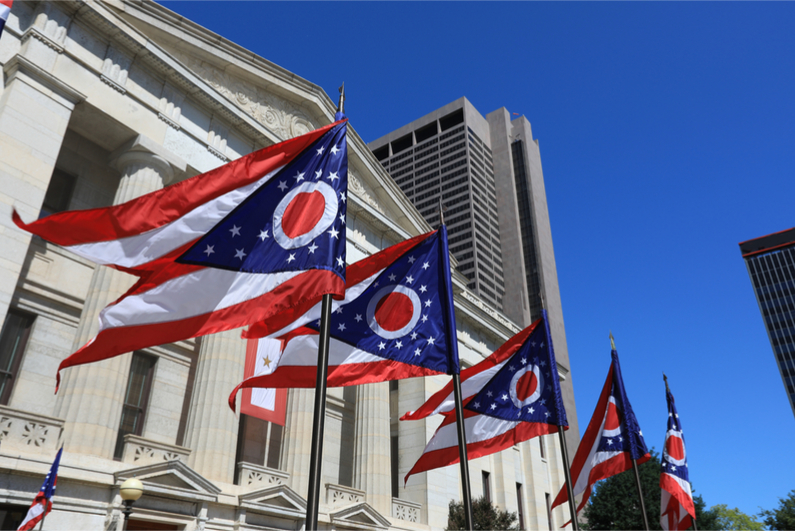30-second summary
- Ohio gambling sector hit all-time high revenue figures in 2018
- Racino revenues increase 7% and casino revenues increase by 2%
- Concerns remain about casino revenues falling below forecasts
- Legal sports betting possibly coming to the state in the near future
History of gambling in Ohio
Casinos have been legal in Ohio since November 2009, after passage of a public referendum. That was the Four Casinos Ballot Initiative, which gave the green light for commercial casinos in Toledo, Columbus, Cleveland, and Cincinnati. The state’s seven racetracks were also given permission in 2009 to install video lottery terminals (VLTs).
In return for the installation of VLTs, each racetrack was required to invest $80m (£62m) in facility improvements. The minimum age to gamble was lowered from 21 to 18. There are now calls for sports betting to become legal in the state.
The initiative was the culmination of almost ten years campaigning for the issue. The first casino began operating in 2012.
Record gambling figures
Ohio’s racinos and casinos in Ohio hit new heights in 2018, with record revenues of $1.86bn (£1.45bn). That was the most profitable year since the casinos opened in 2012. Racino revenues increased by 7% year on year, bypassing the $1bn (£780m) mark.
Casino revenues increased by 2% to $837m (£652m). During the campaign for legalization, experts were projecting that the four licenses could bring in revenues of nearly $2bn (£1.6bn) before taxes. Many people wonder why this is not happening, despite the record results.
The casinos currently offer slot machines and casino games, with the racinos only allowed to offer slot machines. Approximately a third of the gambling revenues go towards taxes, meaning that it was also a good year for the state, which gained tax revenues of approximately $620m (£483m).
Concerns with the casinos
The revenue forecast for the casinos at the start of 2018 was $1.4bn (£1.1bn). The actual figure of $837m (£652m) is only approximately 60% of the forecast.
Many people in the casino sector say that the racinos are cutting significantly into casino revenue. The total of more than 17,000 slot machines at the seven racetracks satisfies the needs of a lot of gamblers.
The VLT taxes go directly to school budgets while casino taxes go into the general fund. The executive director of the Ohio Casino Control Commission said that he thinks the initial projections were inaccurate, going right back to the election campaign. Because the gambling sector was non-existent in the state at the time, it was very hard to come up with an accurate estimate.
Despite the concerns about not meeting projections, the state still benefits massively from the gambling sector. In addition to the tax revenues, more than 20,000 jobs have been created.
There is also growing interest in the state from casino companies. MGM Resorts is the new owner of the largest resort casino in Ohio, formerly the Hard Rock Rocksino. MGM clearly sees the potential Ohio has for gambling. The company bought the casino for nearly $1bn (£780m) and it is currently the state’s best performing casino, largely because of its location between Akron and Cleveland.
Sports betting on the horizon?
It is possible that sports betting will soon become legal in Ohio. The legislature will consider a bill on the issue this year.
Ohioans are very passionate about sports and sports betting would likely be a big success. It would get more people into casinos, which would lead to increased revenues.
It is a matter of when, not if, sports betting will become legal. However, the legislature is not going to rush a bill through, as happened in other states. Legislators will take their time to make sure that the regulations are well thought-out and practical.
